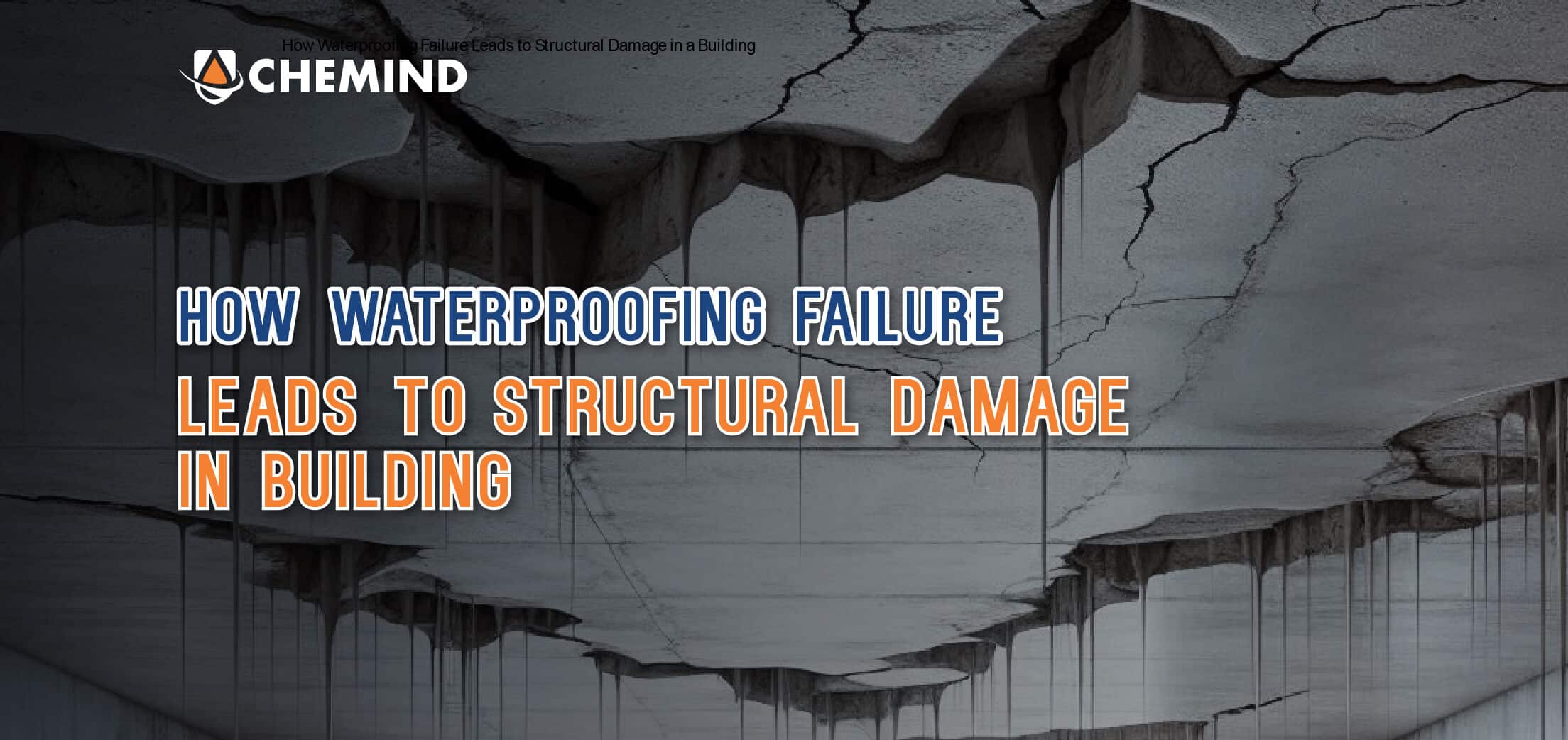How Waterproofing Failure Leads to Structural Damage in a Building

Waterproofing is a critical component in the construction and maintenance of buildings. It acts as a barrier, preventing water from penetrating walls, foundations, and other structural elements. However, when waterproofing systems fail, it can lead to significant structural damage. This blog explores the consequences of waterproofing failure, the mechanisms through which it causes structural harm, and preventive measures to safeguard buildings.
The Consequences of Waterproofing Failure
Waterproofing failure can have far-reaching consequences, impacting both the structural integrity and the health of the building’s environment. Key issues arising from waterproofing failure include:
- Water Infiltration: The most immediate consequence is water entering parts of the building where it should not. This can lead to visible water damage, such as stains on walls and ceilings, and unseen damage within the structure.
- Dampness and Mold: Persistent moisture creates an ideal environment for mold and mildew growth. Mold not only affects indoor air quality but can also deteriorate building materials over time.
- Compromised Insulation: Water infiltration can saturate and degrade insulation materials, reducing their effectiveness and leading to increased energy costs.
Mechanisms Through Which Waterproofing Failure Causes Structural Damage
When waterproofing systems fail, several mechanisms come into play that can cause significant structural damage:
- Hydrostatic Pressure
Description: Hydrostatic pressure refers to the force exerted by water against a structure. When water accumulates around the foundation or walls due to inadequate waterproofing, it exerts pressure on these elements.
Impact: Over time, this pressure can cause cracks in the foundation and walls, leading to structural weakening. In severe cases, it can cause foundational shifts or wall bowing. - Freeze-Thaw Cycle
Description: In colder climates, water that infiltrates a building can freeze and expand within cracks and pores of the building materials.
Impact: The expansion caused by freezing water can enlarge cracks and gaps in the structure, leading to further water infiltration and exacerbating structural damage. Repeated freeze-thaw cycles can significantly degrade concrete, brick, and other materials. - Corrosion of Reinforcement
Description: Many modern buildings use reinforced concrete, which incorporates steel bars (rebar) for added strength. When waterproofing fails, water can reach the rebar.
Impact: Water, especially if it carries salts or other corrosive elements, can cause the steel to rust and expand. This corrosion weakens the steel and can lead to spalling (breaking off) of the concrete, compromising the structural integrity of the building. - Wood Rot
Description: In buildings with wooden structural elements, water infiltration can lead to wood rot.
Impact: Prolonged exposure to moisture causes wood to decay and lose its strength. This can lead to sagging floors, weakened support beams, and, in extreme cases, structural collapse. - Soil Erosion
Description: Waterproofing failures that lead to significant water leakage around a building can cause soil erosion around the foundation.
Impact: Eroded soil can destabilize the foundation, causing it to settle unevenly or shift. This can lead to cracks in the foundation and walls, misaligned doors and windows, and other structural issues.
Preventing structural damage due to waterproofing failure requires a proactive and comprehensive approach:
- Regular Inspections and Maintenance
– Conduct routine inspections of waterproofing systems, looking for signs of wear, damage, or failure.
– Repair any detected issues promptly to prevent water infiltration. - Quality Waterproofing Materials
– Use high-quality waterproofing materials that are suitable for the specific conditions of the building site.
– Ensure proper installation by skilled professionals to maximize the effectiveness of the waterproofing system. - Effective Drainage Systems
– Implement effective drainage systems to direct water away from the building. This includes proper grading of the landscape, functional gutters and downspouts, and drainage pipes.
– Regularly clean and maintain these systems to prevent blockages and overflows. - Foundation Protection
– Protect the foundation with additional waterproofing measures, such as applying waterproof coatings or installing a membrane around the foundation.
– Consider installing a sump pump in basements or crawl spaces to manage water that collects around the foundation. - Moisture Control
– Use dehumidifiers and proper ventilation systems to control moisture levels within the building, especially in areas prone to dampness like basements and bathrooms.
– Ensure that the building’s HVAC system is adequately maintained to manage indoor humidity
Conclusion
Waterproofing failure is a serious issue that can lead to extensive structural damage if not addressed promptly and effectively. By understanding the mechanisms through which water can harm a building’s structure and implementing robust preventive measures, building owners and managers can protect their investments and ensure the longevity and safety of their properties. Regular maintenance, quality materials, and effective drainage are key components in safeguarding against the damaging effects of waterproofing failure.
Chemind Industries: Ensuring Longevity and Reliability
At Chemind Industries, we take pride in our commitment to delivering high-quality waterproofing membrane products that offer exceptional durability and reliability. Our membranes undergo rigorous testing to ensure they meet industry standards for performance and longevity.
Moreover, our team of experts provides comprehensive support, from product selection to installation guidance, to ensure optimal performance and longevity of our waterproofing solutions. We understand that each project is unique, and we tailor our products and services to meet the specific needs and challenges of our clients.
Other popular post you might be interested
- 5 tips to waterproofing toilet and bathroom
- How to Prevent Water Damage to Your Home with an Effective Waterproofing System
- The guide to Waterproofing Membrane
- How to waterproof your bathroom and toilet with CHEMFLEX R100
- Benefits and disadvantages of waterproofing sheet system
- Water leaking in condominium apartment from upstairs. Who should repair?
- MEASAT Global RC Rooftop waterproofing works
- Benefits and Disadvantages of Liquid Waterproofing System
- Advantages and Disadvantages of Polyurethane (PU) Liquid Waterproofing
- House Waterproofing Contractor Guide for Malaysia Home – Type of Waterproofing
